Today, no visitors in the peaceful city would believe how turbulent Metz history has been over the centuries, being continually annexed by France and Germany. Here is a short overview of Metz History.
Metz History: Roman Divodurum
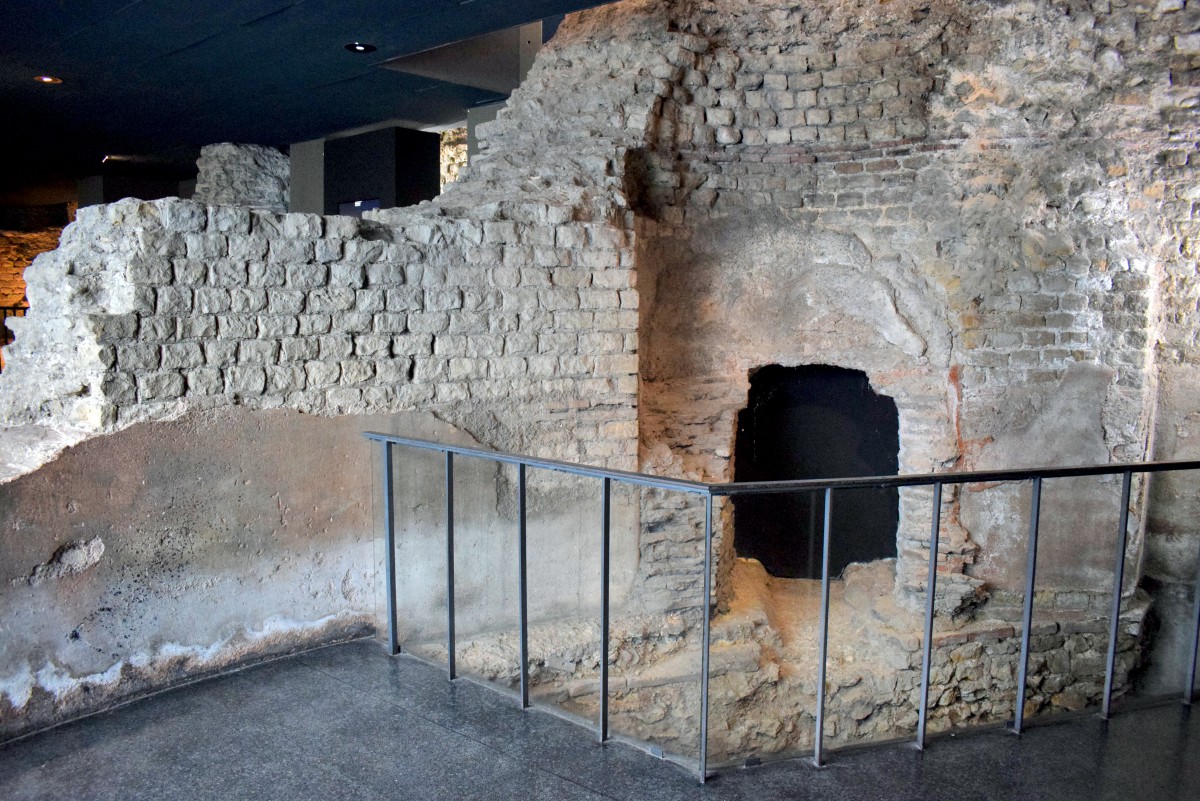
Metz is a striking city due to its natural and architectural heritage, mostly due to a rich history. The site was inhabited during the Roman era. It was perfectly located at the crossroads of the Roman military roads Reims-Strasbourg and Trier-Lyon. At that time, Metz was called “Divodurum”, meaning the town at the holy mountain.
The town was the head quarters of a local tribe, the Celtic Mediomatrici, shortened by Mettis, from which derived the present name of Metz.
In the 2nd century AD, Metz was a thriving and wealthy city of 40,000 inhabitants. It was hence larger than Lutetia (Paris). It even had one of the Roman Worlds’ largest amphitheatres, seating 25,000.
The Roman aqueduct
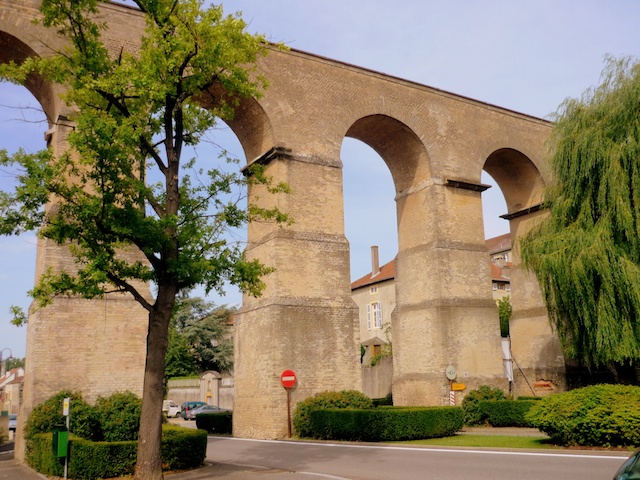
Another interesting discovery of Metz’ Roman past lies a few kilometres away from the city’s outskirts. The remains of the Gorze to Metz aqueduct. Such a large city with its baths, fountains and trade activities needed an efficient water-supply system.
The itinerary of the water system was 22km long. It linked the spring of Gorze (208m) to Metz (184m). The aqueduct included :
- a 12,7km long tunnel,
- an arcaded bridge 1km long between Ars-sur-Moselle and Jouy-aux-Arches,
- followed by another 8km underground tunnel.
You can still see part of the tunnel along the road between Gorze and Novéant-sur-Moselle. The most impressive ruins are situated each side of the Moselle River (5 arches in Ars and 16 in Jouy).
The legend of St. Clement and the Graoully
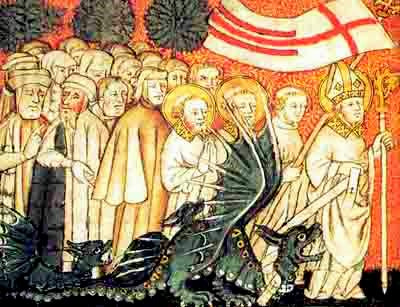
As a crossroads of major Roman routes, Metz was open to new religious ideas, such as Christianity. With the churches of Reims and Trier, Metz housed one of the oldest Christian congregations in Northern Gaul. It is believed that the Christian faith spread into Metz around 280 AD, with the city’s first bishop: St. Clement. According to tradition, the holy man was sent to evangelise the city. But also to deliver it from a dragon which brought terror and death to the local population: the Graoully. The beast lived in the ruins of the Roman amphitheatre. The place was infested by a multitude of snakes.
The gigantic reptile was unable to walk on earth because of his short legs. However it was particularly impressive with its body covered in green-brown scales that no arrow could penetrate. Once, the dragon was seen flying over the region. Right above the roofs. His jagged wings unfolding. His eyes red and flaming, ready to catch his prey in mid-air. However, the most terrifying thing about the monster was its mouth which breathed fire and sulphur. Terrifying huh?
The hideous monster made a feast by eating imprudent people at night time. Not surprisingly he was particularly fond of young maidens! Nothing could overcome him. He seemed to fear nothing except water. No wonder the people of Metz called him “le Graoully”, from the german “gräulich” (terrifying).
Here comes St Clement
Arriving in the region to preach the Gospel to the pagans, St. Clement was venerated as a Saviour who could help them get rid of the hideous dragon.
St. Clement was so touched by their curse that he decided to stand up to the monster in his hide-out, in the amphitheatre. He faced the dragon. Fixed his eyes. And suddenly threw his shawl towards his neck. The shawl became entwined around the neck of the Graoully. Clement then squeezed the shawl strongly and pulled the huge reptile to the Seille River and threw the monster into it.
The water was said to have boiled for a long time while the Graoully was attempting to get out of the water. But it just couldn’t unfold him own wings and was drawn into the depths of the water forever.
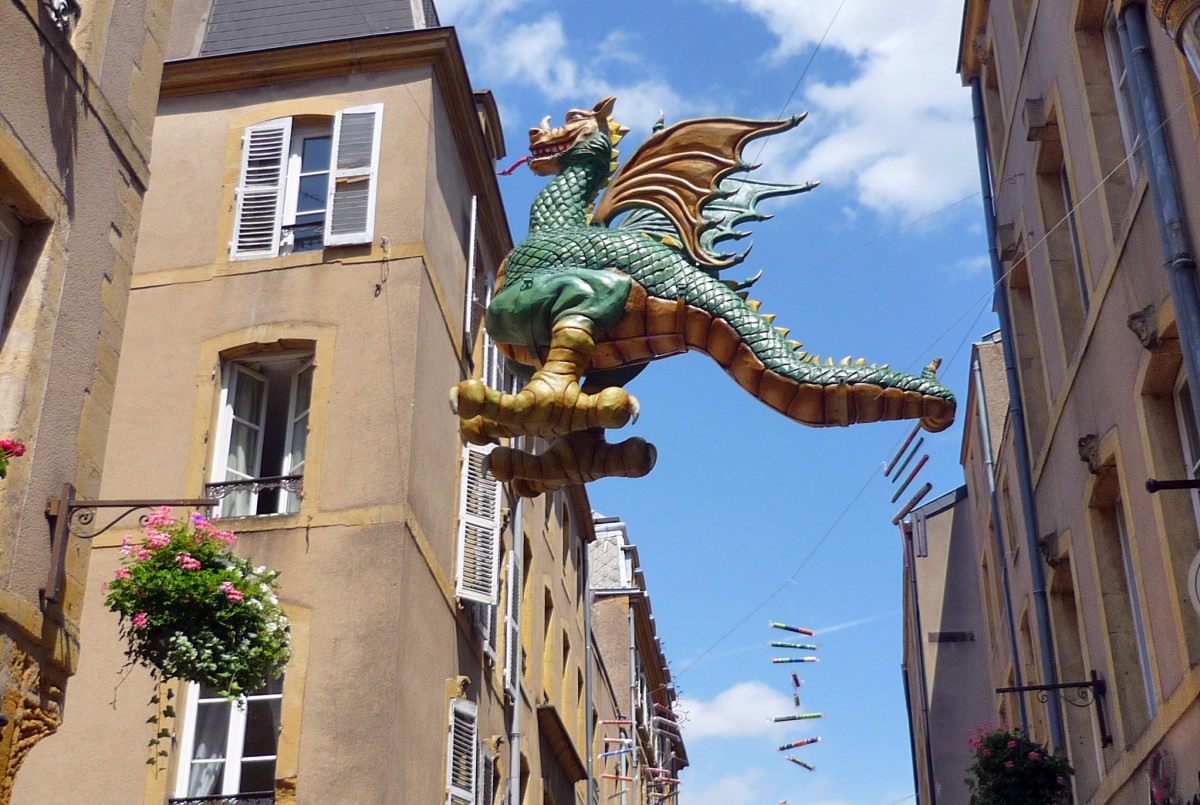
The souvenir of the Graoully in Metz
Today the souvenir of the Graoully in Metz history remains strong. You can see one of the oldest statues of the monster in the Cathedral’s crypt. Rue Taison recalls an awkward tradition where people living in this street, so afraid of the monster, would say at night:
“Quiet, quiet, the Graoully is coming!”
Children have been frightened for many generations when passing by the Taison Street. Today, a large effigy is of the Graoully hangs above the street.
Between the 12th century and 1785, the legend of St. Clement was celebrated by a popular procession. An image of the dragon was carried throughout the town before being whipped by children.
The Graoully is also part of the flag of the famous Football Club in Metz… as for St. Clement; you can still see his Episcopal seat in the Cathedral’s chancel, entirely carved out of a cipolin-marble column, dating back to Merovingian times.
Metz history in the Middle-Ages
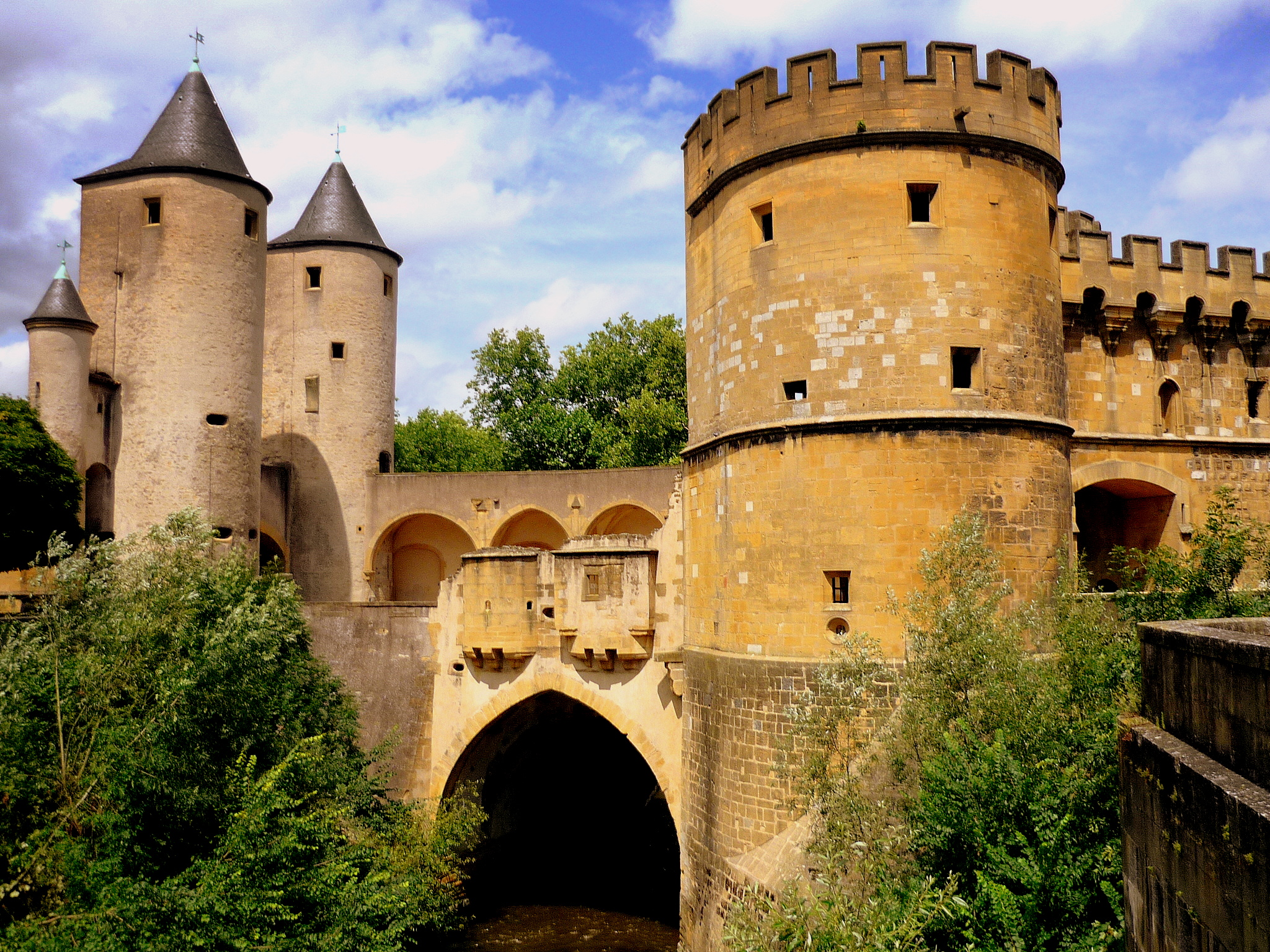
After being defeated by Attila in 451 AD, Metz became the possession of the Franks from the end of the 5th century. During the 8th century, Charlemagne considered making Metz his chief residence before he finally decided in favour of Aachen.
In 843, Metz became the capital of the Kingdom of Lotharingia, a former country comprising Benelux, Lorraine, Saarland, parts of the Rhineland and western Switzerland. The city became an influential artistic and cultural centre in Europe.
From the 12th century, Metz and its vicinities became a free city within the Holy Roman Germanic Empire. The Republic of Metz became a wealthy little territory encircled by the Duchy of Lorraine whose capital was Nancy, 55km to the South. On several occasions, rich Metz lent money to the Dukes of Lorraine, the Kings of France and the Roman Germanic Emperors.
The Knights Templar
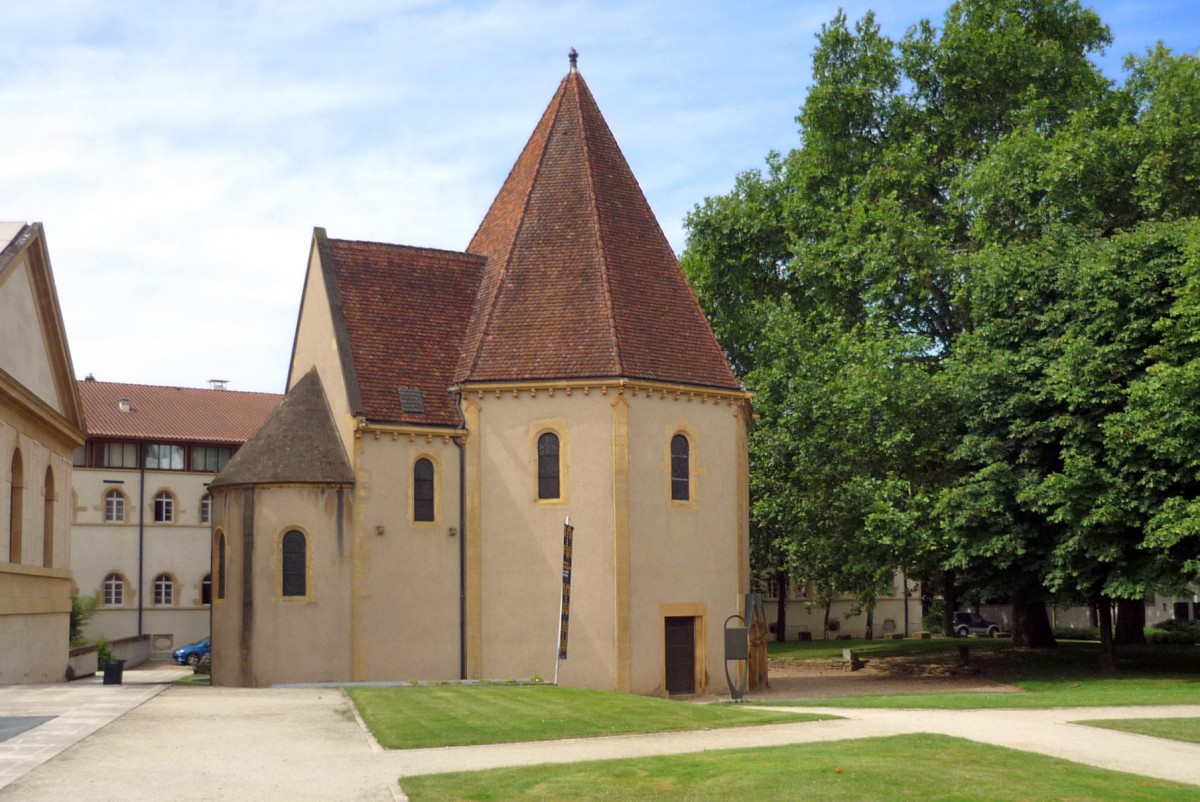
According to tradition, the Knights Templar who came to Metz in 1133 built a chapel in the town between 1180 and 1220. The church was part of a larger Commandry destroyed at the same time the Order was abolished. It represents an architectural masterpiece in Lorraine as it is the only rotunda of that kind in the region. Its circular layout is typical of the Templar tradition, (as in the cathedral of Aachen) and it is believed that the chapel was modelled after that of Laon, Picardy, and built 40 years earlier.
Metz history during the French era
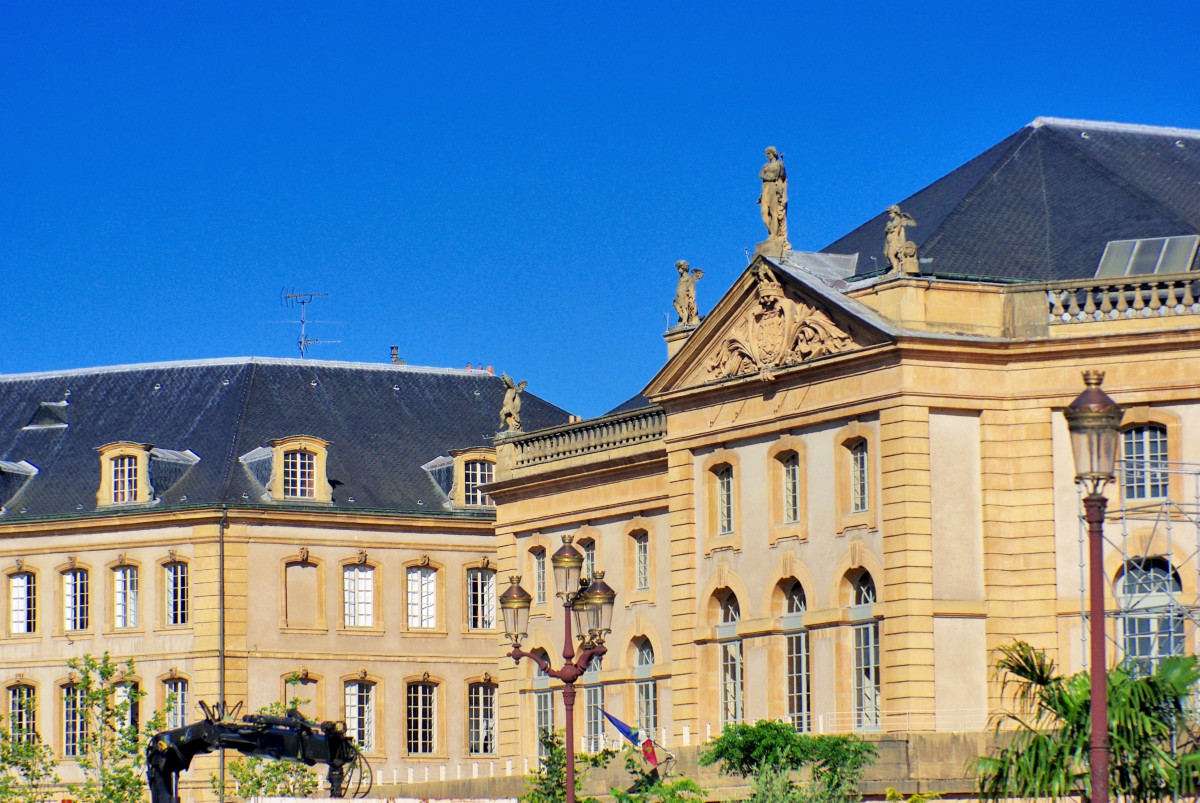
1552 was an important historical year for Metz, as the city – also a major bishopric in Lorraine – was annexed by the Kingdom of France, along with Toul and Verdun. When it was ‘officially’ confirmed that Metz belonged to France at the Treaty of Westphalia (1648), the French started to build monuments and majestic squares that can still be seen today: the Place d’Armes and its classical buildings, the Opera-Theatre (it is said to be the oldest in France) and the Palais de Justice.
The German Annexation of Metz

At the end of the Franco-Prussian War of 1870-71, Metz’ destiny changed dramatically as the city and its département (Moselle) was annexed by Bismarck to Germany.
Kaiser Wilhelm II personally oversaw the new town planning project around the railway station, to the South of the Old Town, in order to make Metz a model of German prestige and elegance. This new but remarkable architectural example was commissioned to an architect from Berlin, Kröger, who erected many imposing buildings in the Rhenish tradition along Metz’ Grand Boulevards.
Metz French again
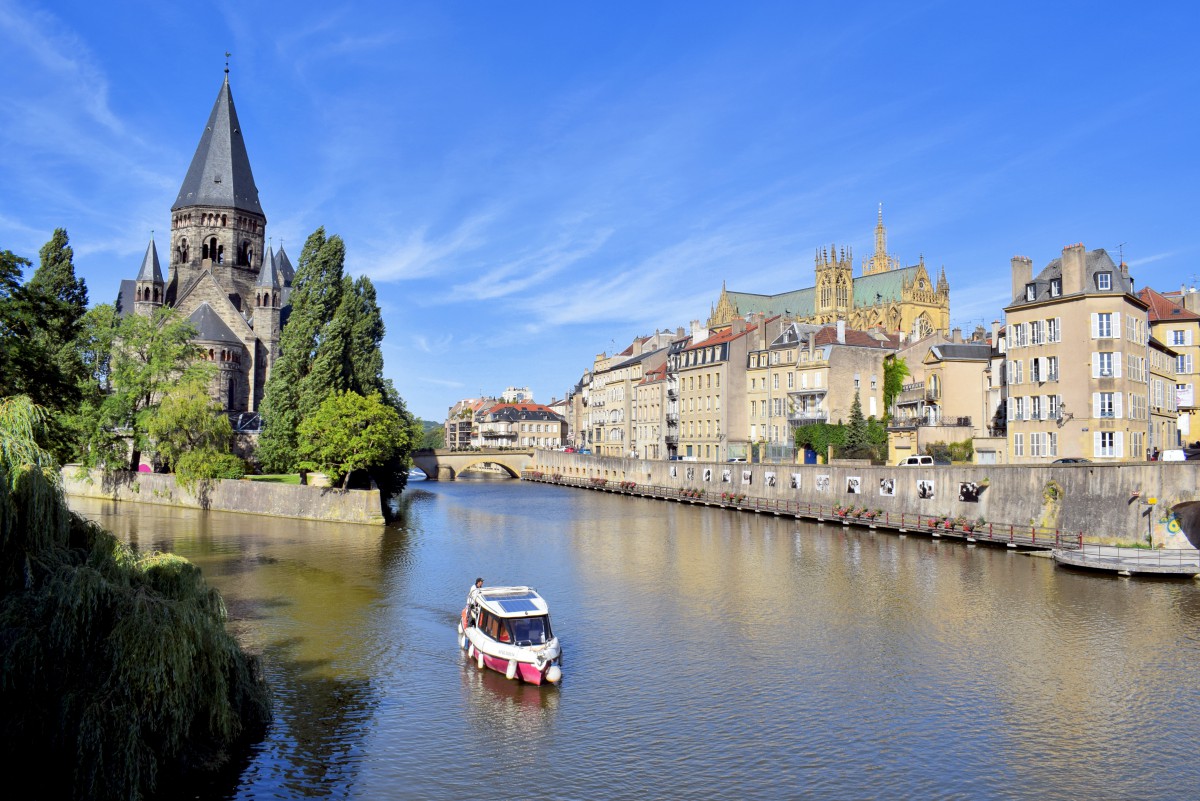
Metz and its département (Moselle) went back to France in 1918 after World War I. Annexed again between 1940 and 1945 by Germany, it came back to France at the Liberation.
In 2010, the Centre Pompidou opened a striking museum behind the railway station. The Parisian museum of modern arts chose Metz to house its first permanent outpost.
Visit the Tourist Board of Metz to get more info on what to do in Metz, where to eat and sleep!




